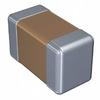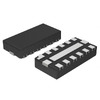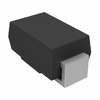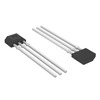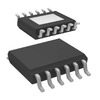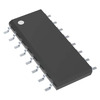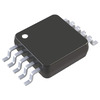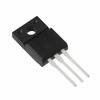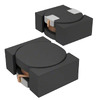BD136 Transistor: Pinout, Applications, and Specifications
The BD136 transistor is celebrated for its versatility, excelling in tasks like switching and audio amplification. This guide embarks on a thorough expedition into its various applications, detailed specifications, and alternative components that one might consider. Our aim extends beyond merely conveying factual information, we strive to deepen comprehension by providing enriched explorations and case studies that motivate practical involvement and ignite curiosity.Catalog

What is the BD136?
The BD136, a PNP transistor, is primarily crafted for switching operations and signal amplification endeavors. It adeptly handles continuous currents reaching -1.5A with a tolerance for voltages up to -45V. Its attributes make it beneficial for audio circuits and other applications requiring precise manipulation of signals. Encased in a TO-126 package, the design focuses on effective thermal management, enabling sustained optimal performance even under operational pressures. This transistor features three terminals, emitter, collector, and base. Each with its distinct function. Notably, it supports up to 2A pulse current when paired with a suitable heatsink. This ability to manage pulse currents highlights the significance of thermal management in enhancing its longevity and reliability, urging the establishment of an adequate setup to counter potential damage during increased electrical demands.
In practical use, the BD136 is regularly implemented in audio amplification circuits, where its properties are harnessed to improve audio fidelity by ensuring clear and consistent signal enhancement. Many shared by electronics and reveal that the transistor’s robustness in handling considerable electrical loads plays a role in its effective application across various circuits. Designing circuits with BD136 requires attention to the accurate execution of terminal applications. Neglecting these aspects may cause ineffective operation or damage. The intricate designs in audio circuitry gain substantial advantages from using components like the BD136, addressing challenges such as signal distortion and power management.
BD136 Pin Configuration
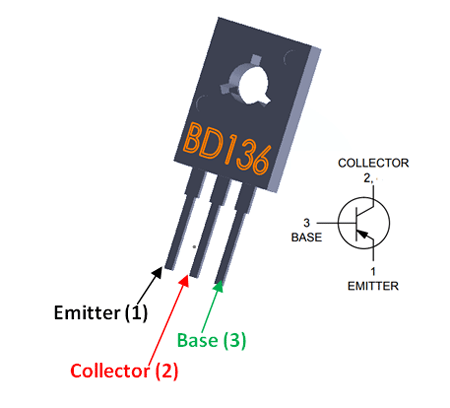
BD136 Symbol, Footprint, and CAD Model
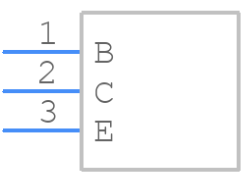

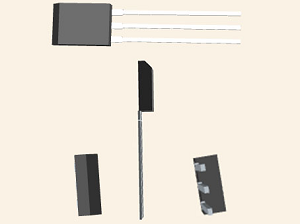
Features of the BD136
Transistor Type
The BD136 transistor stands as a PNP type, serving a role in both amplification and switching activities. It finds its strength in circuits demanding accurate current control, such as those involving audio amplification. Engaging its PNP attributes, this component is often paired with other transistor forms, enhancing the audio by delivering low noise operations.
Power Dissipation
Delivering a power dissipation capacity of 12.5 watts, the BD136 is equipped to handle moderate power ranges effectively. This ability affords it a place in numerous electronic undertakings. In practical terms, applying heat sinks becomes a common practice to successfully mitigate thermal output during extended use, assuring stable performance over time.
Collector Current Handling
Capable of accommodating a maximum collector current of –5A, the BD136 proves effective in scenarios requiring substantial current throughput. When operating in settings like motor circuits, its ability to drive higher currents is valued.
DC Current Gain (hfe)
Its broad DC current gain spectrum provides a strategic advantage in tailoring amplification to precise levels in circuit configurations. Circuit capitalize on this by carefully setting bias conditions to achieve optimal gains, ensuring peak performance while maintaining circuit stability.
Voltage Ratings
The specified voltage thresholds underscore the transistor’s resilience amidst voltage fluctuations for sustained operations. In power supply circuit designs, ensuring operational voltages remain within these set limits prevents breakdowns, securing reliable functionality in a variety of environments.
Maximum Transition Frequency
Reaching transition frequencies as high as 190 MHz, the BD136 is tailored for high-frequency applications. This feature finds value in RF scenarios, where efficiency and responsiveness are imperative. Others leverage this in radio frequency transmitters to achieve quick transition speeds, enhancing overall signal processing capabilities.
Operating Temperature Range
The BD136's expansive temperature operational range underlines its competence to withstand stringent conditions. This adaptability extends from industrial applications to household devices, denoting its broad applicability. Others emphasizes that incorporating careful thermal regulation methods, like cooling systems, can bolster its reliability under challenging conditions.
High Current Gain
Demonstrating a typical current gain of 80 at a collector current of 10mA, the BD136 efficiently performs moderate current amplification tasks. This quality marks it as an asset in small signal applications, optimizing power while ensuring signal clarity. Practical insights often highlight efficiency improvements via precise gain adjustments, maximizing circuit efficacy without superfluous power use.
BD136 Technical Specifications
|
Type |
Parameter |
|
Lifecycle Status |
ACTIVE (Last Updated: 8 months ago) |
|
Contact Plating |
Tin |
|
Mounting Type |
Through Hole |
|
Number of Pins |
3 |
|
Collector-Emitter Breakdown Voltage |
45V |
|
hFE Min |
25 |
|
Packaging |
Tube |
|
Part Status |
Active |
|
Number of Terminations |
3 |
|
Max Power Dissipation |
1.25W |
|
Element Configuration |
Single |
|
Case Connection |
ISOLATED |
|
Polarity/Channel Type |
PNP |
|
Collector Emitter Voltage (VCEO) |
45V |
|
Factory Lead Time |
8 Weeks |
|
Mount |
Through Hole |
|
Package / Case |
TO-225AA, TO-126-3 |
|
Transistor Element Material |
SILICON |
|
Number of Elements |
1 |
|
Operating Temperature |
150°C TJ |
|
JESD-609 Code |
e3 |
|
Moisture Sensitivity Level (MSL) |
1 (Unlimited) |
|
ECCN Code |
EAR99 |
|
Base Part Number |
BD136 |
|
Power Dissipation |
1.25W |
|
Transistor Application |
AMPLIFIER |
|
Transistor Type |
PNP |
|
Max Collector Current |
1.5A |
|
DC Current Gain (hFE) Min |
40 @ 2V 150MA |
|
Vce Saturation (Max) @ Ib, Ic |
500mV @ 50mA, 500mA |
|
Max Breakdown Voltage |
45V |
|
Emitter Base Voltage (VEBO) |
5V |
|
Length |
7.8mm |
|
REACH SVHC |
No SVHC |
|
RoHS Status |
ROHS3 Compliant |
|
Current - Collector Cutoff (Max) |
100nA ICBO |
|
Transition Frequency |
75MHz |
|
Collector Base Voltage (VCBO) |
45V |
|
Height |
10.8mm |
|
Width |
2.7mm |
|
Radiation Hardening |
No |
|
Lead Free |
Lead Free |
BD136 Operational Mechanism
The BD136 is a PNP transistor great in controlling current flow. Initially, without base current, the emitter and collector are forward-biased, facilitating current passage. Upon applying a base current, this biasing reverses, halting current flow. This alternating capacity is greatly appreciated in complex tasks related to dynamic current management within electronic frameworks. The BD136's ability to direct current offers diverse applications. Those adept in electronics utilize this component for intricacies such as signal amplification and device switching in reaction to input variations. Skillfully adjusting the base current allows for regulation of power, proving beneficial in creating circuits with precise energy management requirements.
Delving into the BD136’s functionality reveals its dependence on semiconductor traits. These transistors serve as gates for current, and their effectiveness is intimately tied to the underlying semiconductor substance. Studying semiconductor science illuminates how atomic design and doping influence the transistor’s behavior, affecting the delicacy and potency of current regulation. The BD136’s dependability hinges on its thermal resistance and switching velocity. Reports suggest that ensuring substantial thermal management and adhering to prescribed operational conditions can prolong and enhance the transistor's efficacy. The BD136 transistor captures the delicate harmony between theoretical models and practical use. Comprehending its operation encompasses not only acknowledging its current-modulating capabilities but also valuing the subtleties inherent in semiconductor technology.
Applications of the BD136
Motor Control and Darlington Pair Formation
The BD136 transistor finds its place in motor control settings, leveraging its medium power handling capabilities to manage motor operation smoothly. It gains importance in crafting Darlington pairs, a method that boosts current gain. This refined ability to drive current is beneficial for gadgets that transform feeble signal inputs into stronger outputs.
Engaging in Audio Amplification
In audio amplification, the BD136 becomes a valuable asset by providing crisp sound reproduction while preserving signal clarity over varying frequencies. Its application in top-notch audio systems showcases its adeptness in harmonizing input and output harmonics, fostering a well-balanced listening pleasure.
Serving as a Load Driver
Deploying the BD136 as a load driver facilitates adept handling of high-power loads with minimal input requirements. This trait is frequently utilized in industrial automation to allow precise power delivery adjustments, ensuring devices function optimally.
Facilitating Impedance Buffering and Current Mirroring
The BD136 plays a role in impedance buffering, preventing detrimental interactions between input and output circuits, promoting a smooth exchange among components. Its skill in current mirroring maintains consistent current replication, a feature in analog circuit layouts ensuring uniformity across parallel outputs.
Enhancing Various Amplifier Stages
Offering versatility, the BD136 augments multiple amplifier stages, ranging from initial input stages to the final output phases. It bolsters signal strength and integrity, particularly within multi-stage amplifiers, where each segment must uphold quality to yield superior performance.
Implementing H-Bridge and Comparator Circuits
When used in H-Bridge setups, the BD136 aids motor control and direction alteration effectively. Its role in comparator circuits is use for precise threshold detection and swift switching, contributing to digital logic processes.
Collaborating with Oscillators and Astables
The BD136's interface with oscillators is instrumental in producing stable timing signals for synchronized operations. Its involvement in astable multivibrators results in continuous pulse generation for clock signal creation and modulation activities.
Energizing Signal Amplification and Power Supply Functions
In the arena of signal amplification, the BD136 transforms weak inputs into formidable outputs necessary for subsequent processing stages. Its proficiency in power supply regulation is great for delivering stable voltage and current, upholding system dependability and performance across various uses.
Alternative of the BD136
|
Part Number |
Manufacturer |
Description |
|
BD136G |
ON Semiconductor |
1.5 A, 45 V PNP Bipolar Power Transistor, TO-225,
500-BLKBX |
|
BD136S |
Fairchild Semiconductor Corporation |
Power Bipolar Transistor, 1.5A (IC), 45V
V(BR)CEO, 1-Element, PNP, Silicon, TO-126, Plastic/Epoxy, 3 Pin |
|
BD136-BP |
Micro Commercial Components |
Power Bipolar Transistor, 1.5A (IC), 45V
V(BR)CEO, 1-Element, PNP, Silicon, TO-126, Plastic/Epoxy, 3
Pin, PLASTIC PACKAGE-3 |
|
BD1366STU |
Fairchild Semiconductor Corporation |
Power Bipolar Transistor, 1.5A (IC), 45V
V(BR)CEO, 1-Element, PNP, Silicon, TO-126, Plastic/Epoxy, 3 Pin |
BD136 Packaging
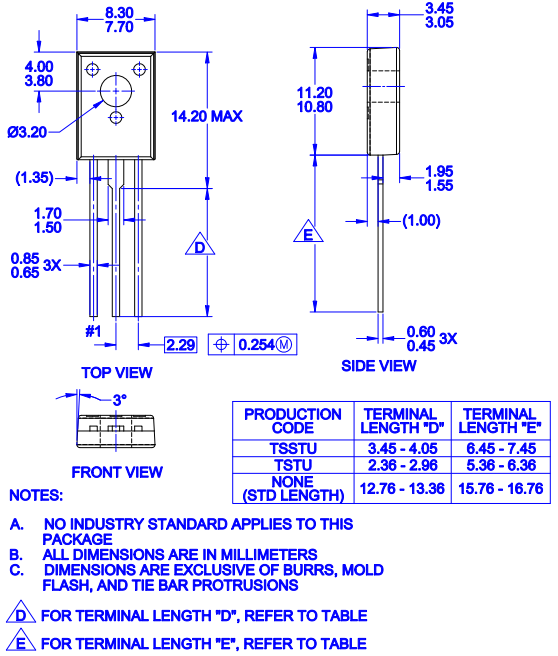
BD136 Manufacturer Information
At the forefront of semiconductor innovations, STMicroelectronics plays an influential role in the expansion of electronic technologies, with its System-on-Chip (SoC) solutions. Their focus is to push the boundaries of what is possible in semiconductor development, reflecting a passion for integration and enhancement of modern electronics. The evolution of SoC technologies has dramatically enhanced the ability to incorporate numerous functions onto a single chip, simplifying product designs and broadening their capabilities Across diverse sectors like consumer electronics, automotive, and telecommunications, SoC technologies manifest their versatility. Innovation within semiconductor technology pulses at the core of STMicroelectronics' ethos. A company culture rich in creative foresight has borne breakthroughs that redefine benchmarks. Industry connoisseurs frequently hint at the creative drive as great for staying abreast of the tech sector's rapid shifts.
Datasheet PDF
BD136G Datasheets:
About us
ALLELCO LIMITED
Read more
Quick inquiry
Please send an inquiry, we will respond immediately.
Frequently Asked Questions [FAQ]
1. What alternatives can replace the triode BD136?
For those exploring options to replace the BD136 transistor, consider alternatives like the 2SB511, BD166, BC176, and 3CA4C. These components are closely aligned with the BD136 in terms of specifications, offering a PNP configuration, 45V voltage rating, 1.5A current capacity, and power dissipation of 12.5W. When selecting a substitute, take into account the specific requirements of your application. Aspects such as thermal management frequently come into play in different contexts, as components with similar specifications may perform differently under varying conditions.
2. Which devices can the BD136 triode replace?
The triode 3DA1 is a viable replacement for the BD136 in numerous applications. It is wise to ensure compatibility within operational environments, as others often notice that variations in circuit design might lead to minor adjustments being necessary. For instance, careful testing and prototyping can often uncover subtle performance discrepancies not immediately visible in datasheet specifications.
3. What characteristics define the BD136?
The BD136 is recognized as a PNP transistor with versatile capacities in both switching and signal amplification tasks. It is appreciated for its dependable performance across a wide array of electronic devices. Many frequently find its reliability in moderate power applications makes it a trustworthy choice for amplifying audio signals or integrating into switching circuits. Moreover, insights emphasize the relevance of this transistor in educational contexts, where its simple design aids in understanding the principles of semiconductor operations.

Complete Guide to the LM323K Voltage Regulator
on November 5th
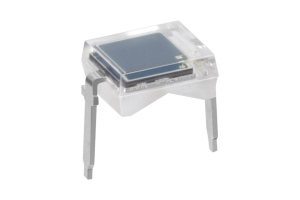
What Makes the BPW34 Photodiode Ideal for Remote Control Systems
on November 5th
Popular Posts
-

What is GND in the circuit?
on January 1th 2880
-

RJ-45 Connector Guide: RJ-45 Connector Color Codes, Wiring Schemes, R-J45 Applications, RJ-45 Datasheets
on January 1th 2456
-

Fiber Connector Types: SC Vs LC And LC Vs MTP
on January 1th 2050
-

Understanding Power Supply Voltages in Electronics VCC, VDD, VEE, VSS, and GND
on November 7th 1823
-

Comparison Between DB9 and RS232
on January 1th 1742
-

What Is An LR44 Battery?
Electricity, that ubiquitous force, quietly permeates every aspect of our daily lives, from trivial gadgets to life-threatening medical equipment, it plays a silent role. However, truly grasping this energy, especially how to store and efficiently output it, is no easy task. It is against this background that this article will focus on a type of coin cell battery that may seem insignificant on the...on January 1th 1696
-

Understanding the Fundamentals:Inductance Resistance, andCapacitance
In the intricate dance of electrical engineering, a trio of fundamental elements takes center stage: inductance, resistance, and capacitance. Each bears unique traits that dictate the dynamic rhythms of electronic circuits. Here, we embark on a journey to decipher the complexities of these components, to uncover their distinct roles and practical uses within the vast electrical orchestra. Inductan...on January 1th 1638
-

CR2430 Battery Comprehensive Guide: Specifications, Applications and Comparison to CR2032 Batteries
What is CR2430 battery ?Benefits of CR2430 BatteriesNormCR2430 Battery ApplicationsCR2430 EquivalentCR2430 VS CR2032Battery CR2430 SizeWhat to look for when buying the CR2430 and equivalentsData Sheet PDFFrequently Asked Questions Batteries are the heart of small electronic devices. Among the many types available, coin cells play a crucial role, commonly found in calculators, remote controls, and ...on January 1th 1512
-

What Is RF and Why Do We Use It?
Radio Frequency (RF) technology is a key part of modern wireless communication, enabling data transmission over long distances without physical connections. This article delves into the basics of RF, explaining how electromagnetic radiation (EMR) makes RF communication possible. We will explore the principles of EMR, the creation and control of RF signals, and their wide-ranging uses. The article ...on January 1th 1495
-

CR2450 vs CR2032: Can The Battery Be Used Instead?
Lithium manganese batteries do have some similarities with other lithium batteries. High energy density and long service life are the characteristics they have in common. This kind of battery has won the trust and favor of many consumers because of its unique safety. Expensive tech gadgets? Small appliances in our homes? Look around and you'll see them everywhere. Among these many lithium-manganes...on January 1th 1479




